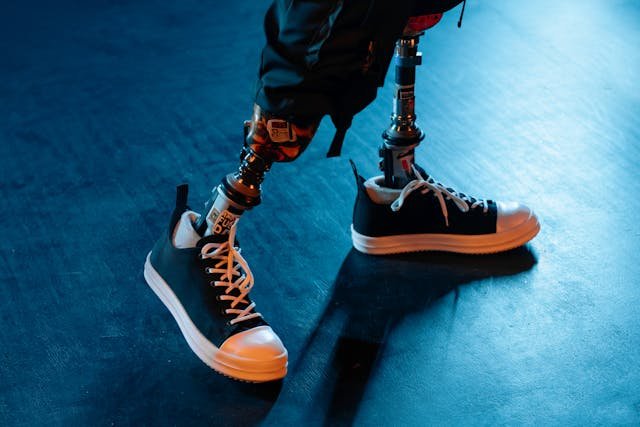Every child has their own path, and for those born with congenital limb differences, that journey may begin with more questions than answers. But what often starts with uncertainty quickly transforms into stories of strength, creativity, and resilience. At Robobionics, we’ve had the privilege of working with many incredible children and their families—each of them showing the world that a limb difference doesn’t define ability. It simply opens the door to new ways of doing things.
This article shares real stories from children who are not just adapting—they are thriving. With support, access to the right prosthetics, and their own unstoppable determination, these young individuals are showing that life with a limb difference can be full of confidence, achievement, and joy.
Aarav’s Journey to Independence Through Play
Aarav was born with a partial left arm, just below the elbow. His parents noticed early on that he was a curious and determined child. Even as a toddler, he would find creative ways to pick up toys, feed himself, and explore the world around him. But as he grew older, some tasks—like playing with building blocks or holding a ball—became a bit more challenging. That’s when his family came to Robobionics.
Discovering Confidence With His First Prosthetic
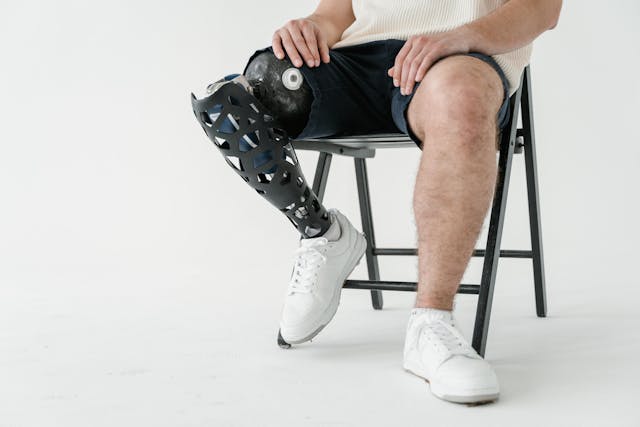
At the age of four, Aarav was introduced to his first prosthetic arm. It was a lightweight, child-friendly design that allowed him to grab, hold, and explore more freely. The team focused on making sure it was not only functional but also fun. His parents were amazed at how quickly he adapted. What helped most was the play-based training that turned daily practice into a game.
Soon, Aarav was using the prosthetic during snack time, playdates, and even while riding his tiny tricycle. He called it his “super arm” and showed it off proudly to his friends and teachers. What started as a tool for support quickly became part of his identity—something he saw as a source of strength, not difference.
At Robobionics, we worked closely with Aarav’s family to ensure the fit, comfort, and function supported his natural development. His progress reminded us that when children feel in control, they often go far beyond what others expect.
School, Social Life, and Self-Belief
Starting school was a big step for Aarav. Like many children, he was excited and a little nervous. But having his prosthetic gave him extra confidence. He could carry his own school bag, open his lunchbox, and participate in craft time without needing constant help. His teachers noted that he was one of the most independent kids in the class.
Socially, Aarav thrived. He enjoyed explaining his “robot arm” to curious classmates and even helped others understand that everyone moves through the world in their own way. His story became an inspiration to many around him.
Robobionics stayed in touch, supporting Aarav through his growth spurts and helping his family adjust the device when needed. What stood out was not just how well he adapted—but how fully he embraced every part of himself.
Meera’s Creative World Through Art and Expression
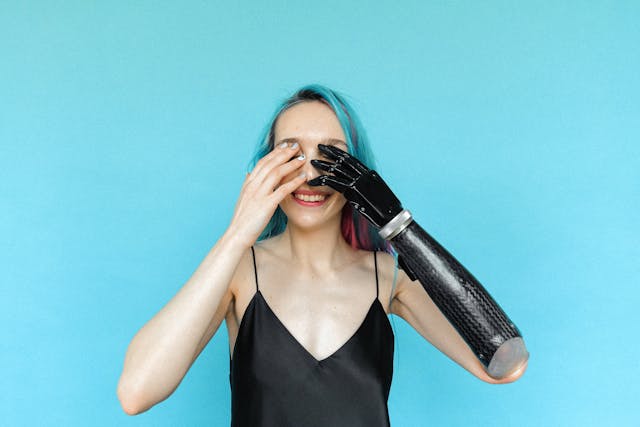
Meera was born with a limb difference affecting her right hand. From the beginning, her parents noticed her strong interest in drawing, coloring, and crafting. Even without full hand function, she found ways to use her left hand and adapted tools to keep doing what she loved. Her creative spirit was unshakable, and her smile lit up any room she entered.
Expressing Herself Without Limits
As Meera grew, her family wanted to give her more comfort and freedom while doing the things she enjoyed most. They came to Robobionics looking for a prosthetic that could support her artistic work. We introduced a custom-designed device with a special stylus holder and adjustable grip, specifically tailored for drawing and coloring activities.
With the new prosthetic, Meera began experimenting with more complex artwork. She was thrilled to be able to draw for longer without feeling tired or frustrated. Her sketchbook soon filled with colorful animals, imaginative landscapes, and portraits of her family. She even started participating in school art competitions and proudly submitted her work alongside her peers.
What her parents loved most was seeing her confidence grow. The prosthetic didn’t replace her creativity—it simply gave her more room to express it.
Making Her Mark at School and Home
At school, Meera became known for her artistic talent. She was often asked to help decorate the classroom or create posters for school events. Her teachers admired her attention to detail and praised her ability to use both traditional and adaptive tools.
At home, she spent her afternoons designing greeting cards, painting on canvas, and trying out new techniques she learned online. Her parents noticed that the prosthetic not only helped her physically—it also shaped her self-esteem. She began to speak more confidently in groups and was no longer shy about her limb difference.
At Robobionics, we encouraged Meera to be part of her prosthetic design process. She chose the colors and helped name her device. By making the process personal, we supported her not just as a user—but as an artist.
Rohan’s Love for Sports and the Road to Mobility
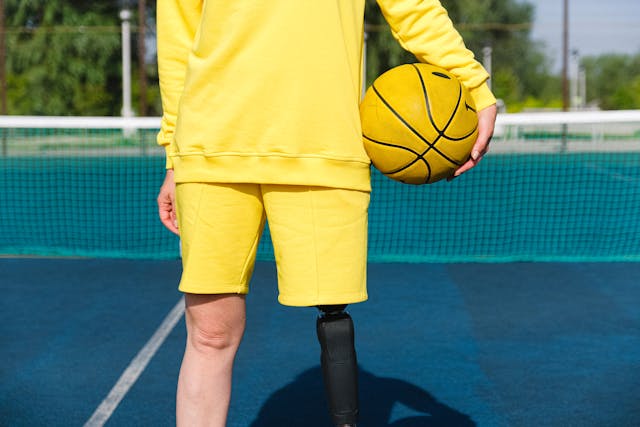
Rohan was born with a limb difference affecting his right leg below the knee. From a very young age, he showed a strong interest in physical activities. Whether it was crawling faster than anyone else in his playgroup or trying to kick a ball with his older brother, Rohan’s energy was always high. His parents wanted to make sure that his passion for movement wouldn’t be limited by his limb difference.
Finding the Right Fit for an Active Life
When Rohan was three years old, his family came to Robobionics seeking a solution that would allow him to move freely and play without fear. After a full evaluation, we created a lightweight transtibial prosthetic specially designed for children who love to be active. The focus was on comfort, shock absorption, and natural movement.
Rohan took to it faster than anyone expected. Within days, he was walking confidently, and within weeks, he was running after his brother in the backyard. He quickly learned how to adjust his steps, balance on different surfaces, and use the prosthetic like it was second nature. His energy didn’t just return—it grew.
Our team supported Rohan through his early adjustments and worked with his parents to build a play-based routine that strengthened his muscles while also making daily use fun and natural.
Kicking Goals and Breaking Barriers
By the time Rohan turned five, he was enrolled in a local soccer training group. His coaches were initially unsure of how he’d keep up, but Rohan surprised them all. He ran, dribbled, and kicked with determination. His prosthetic didn’t slow him down—in fact, it helped him stand out as someone who played with unmatched spirit.
Off the field, Rohan gained more than physical strength. He became more confident at school and more open in group settings. He talked about his prosthetic proudly and encouraged other kids to be curious instead of judgmental. His presence shifted conversations—not just about disability, but about ability in all its forms.
At Robobionics, we continue to support Rohan as he grows. His prosthetic has been upgraded to match his increasing height, weight, and activity level. His story reminds us that the right prosthetic can unlock a world of movement—and a mindset of no limits.
Aanya’s Journey Into Dance and Expression

Aanya was born with a congenital limb difference in her left arm. Her family never saw it as a barrier, and neither did she. From a young age, she was drawn to rhythm, music, and movement. Watching dance videos was her favorite activity, and she often danced freely around the house. Her parents knew that finding a prosthetic that supported her expressive side could help her embrace both her body and her creativity.
Dancing With Confidence and Grace
When Aanya came to Robobionics at age six, her goal was clear—she wanted to dance without hesitation. Her family wanted something that gave her balance and freedom while keeping her movements smooth. Together, we designed a lightweight cosmetic-functional hybrid arm that offered symmetry and allowed for gentle movement without restricting flow.
The first time Aanya wore her prosthetic in dance class, her posture improved instantly. She could extend her arms more evenly, twirl with better balance, and feel more in sync with the music. Over time, her moves became more confident, and her teachers noticed a huge difference—not just in her coordination but in her attitude.
What stood out was how Aanya’s prosthetic became part of her performance. It wasn’t just helping her move—it was helping her express herself without holding back.
Building Self-Worth Through Performance
As Aanya continued her dance classes, she began participating in school performances and local cultural events. On stage, she radiated confidence. After her shows, people often came up to her parents to ask how she had managed so beautifully. The answer was simple—because she believed she could.
The emotional support she received from her family, teachers, and prosthetic care team created a circle of confidence around her. That circle helped her push through hard days, keep practicing, and stay proud of who she was—prosthetic and all.
At Robobionics, we made sure Aanya’s device was adjusted for flexibility and comfort before every major performance. Her story proves that prosthetics are not just for function—they’re also for freedom and expression.
Kabir’s Curiosity for Science and the Joy of Discovery
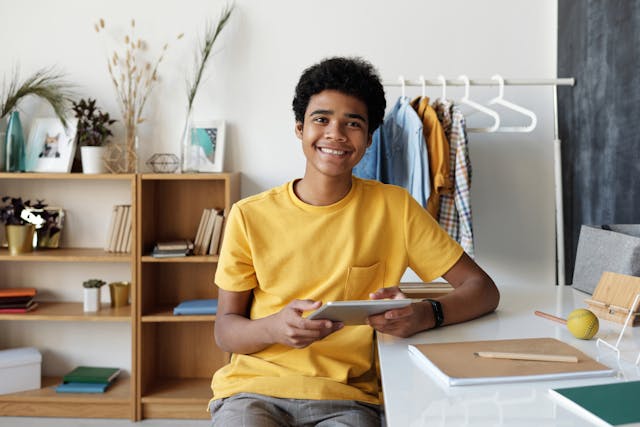
Kabir was born with a congenital limb difference in his right hand. From a very early age, he was known for being curious. He would take apart his toys, ask how things worked, and try to rebuild them in new ways. His parents encouraged his interests and often said he had the heart of an engineer. But as he grew, they noticed he sometimes got frustrated when trying to work with small objects or tools. That’s when they turned to Robobionics.
Supporting Precision with the Right Tools
When Kabir came in for his first prosthetic fitting, he was excited. He didn’t see the prosthetic as something to “fix” him—he saw it as a gadget to explore. Our team recognized his enthusiasm and worked closely with him to design a prosthetic hand that allowed better grip, rotation, and fine motor control. We added a special attachment that helped him hold tools, pens, and even small screws.
The first time Kabir used the prosthetic to hold a magnifying glass and examine leaves, his eyes lit up. It wasn’t just about being able to grip—it was about being able to do. For a child like Kabir, function meant independence and the freedom to create without limits.
At Robobionics, we believe in matching prosthetics with passions. Kabir’s love for science became the anchor that helped him learn to use his device with skill and purpose.
From School Projects to Innovation
Kabir’s new prosthetic gave him the confidence to dive into school science projects with more excitement than ever. He began building simple machines, experimenting with circuits, and presenting his work at school exhibitions. When his classmates asked about his hand, he explained it in simple terms—and even used it as part of his demo.
His teachers noticed that his attention span improved. With the right tools, he was able to focus longer and feel more satisfied with his results. This boost in confidence also showed up in other areas, like reading aloud and group discussions.
Kabir’s story shows that when children are supported in doing what they love, their prosthetic becomes a tool for achievement—not just mobility.
Nisha’s Journey to Writing Her First Story
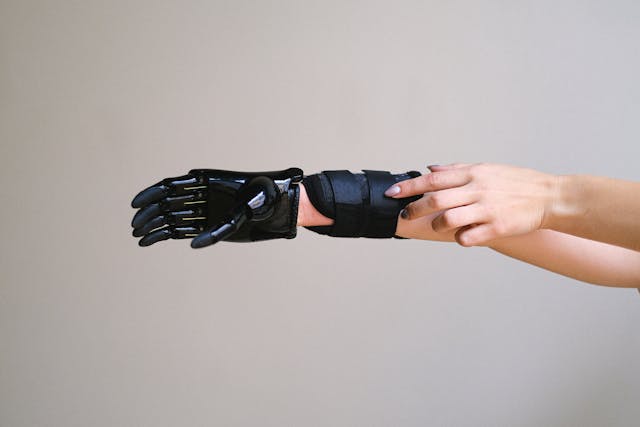
Nisha was born with a limb difference that made holding a pen difficult. But she loved listening to stories. Her grandmother told tales every night, and Nisha would imagine new endings or different characters. Her imagination was vivid, and her desire to write her own stories grew with every passing day.
Her parents noticed that she often struggled to keep up with writing tasks in school. She would dictate her stories to others, but wanted to do it herself. They came to Robobionics hoping to give Nisha the tools to write, draw, and express her stories independently.
Turning Possibility Into Practice
We designed a soft, flexible prosthetic with a built-in writing grip that allowed Nisha to hold a pencil comfortably. At first, she was unsure. But after just a few days of short writing sessions at home, she began forming letters with greater ease.
Her parents used small, creative writing prompts to keep her motivated. She started writing one sentence a day, then short paragraphs, and eventually full pages. Her first story, titled “The Butterfly Princess”, was printed and displayed at her school library.
What Nisha gained was more than the ability to write—it was a voice she could use anywhere, anytime. She was no longer dependent on others to share her ideas. The prosthetic didn’t just support her hand. It supported her identity as a storyteller.
A Growing Voice in the Classroom
With her newfound writing ability, Nisha became more active in class. She volunteered to read aloud, participate in group assignments, and even helped classmates with their creative writing. Her teachers noted a change not just in her skill, but in her spirit.
Nisha’s parents stayed closely involved, helping her build writing habits at home and celebrating every small success. The combination of the right prosthetic, the right tools, and the right emotional support created a space where Nisha could thrive.
At Robobionics, we often say that prosthetics aren’t about restoring what’s missing—they’re about unlocking what’s already there. In Nisha’s case, what was unlocked was imagination, voice, and self-expression.
Conclusion
Every child has their own rhythm, their own dreams, and their own way of growing into the world. For children born with congenital limb differences, this journey can begin with questions, but with the right support, it quickly becomes a story of resilience, ability, and possibility. From dance floors and football fields to art desks and science labs, we’ve seen how children thrive—not just by adapting, but by excelling.
The stories of Aarav, Meera, Rohan, Aanya, Kabir, and Nisha remind us that prosthetics are not about replacing what’s missing. They’re about helping a child do what they love, be who they are, and see themselves without limits. Every smile, every step, every scribbled drawing or kicked ball is a reminder that with the right prosthetic and the right environment, these children can—and do—create their own definitions of success.
At Robobionics, we don’t just build devices. We build partnerships with families. We listen to what each child needs and match it with care, creativity, and compassion. Whether it’s a functional limb for mobility, a tool for expression, or a prosthetic that gives a child their first real sense of freedom—we’re here to make it possible.
If you’re a parent, caregiver, or educator of a child with a congenital limb difference, we invite you to connect with us.



